What is Social Media Monitoring and How Does it Work?
With Digital Marketing majorly influencing every aspect of the world of business, staying ahead requires businesses to harness its potential. An indispensable aspect of this strategy, Social media monitoring, has emerged as a game-changer especially those who seek to understand and leverage the vast realm of social platforms. In the following account, we will delve into the depths of social media monitoring, exploring its definition, significance, working mechanism, and the tools available, with a special comparative focus on the solutions that Vee Track provides.
1. What is Social Media Monitoring?
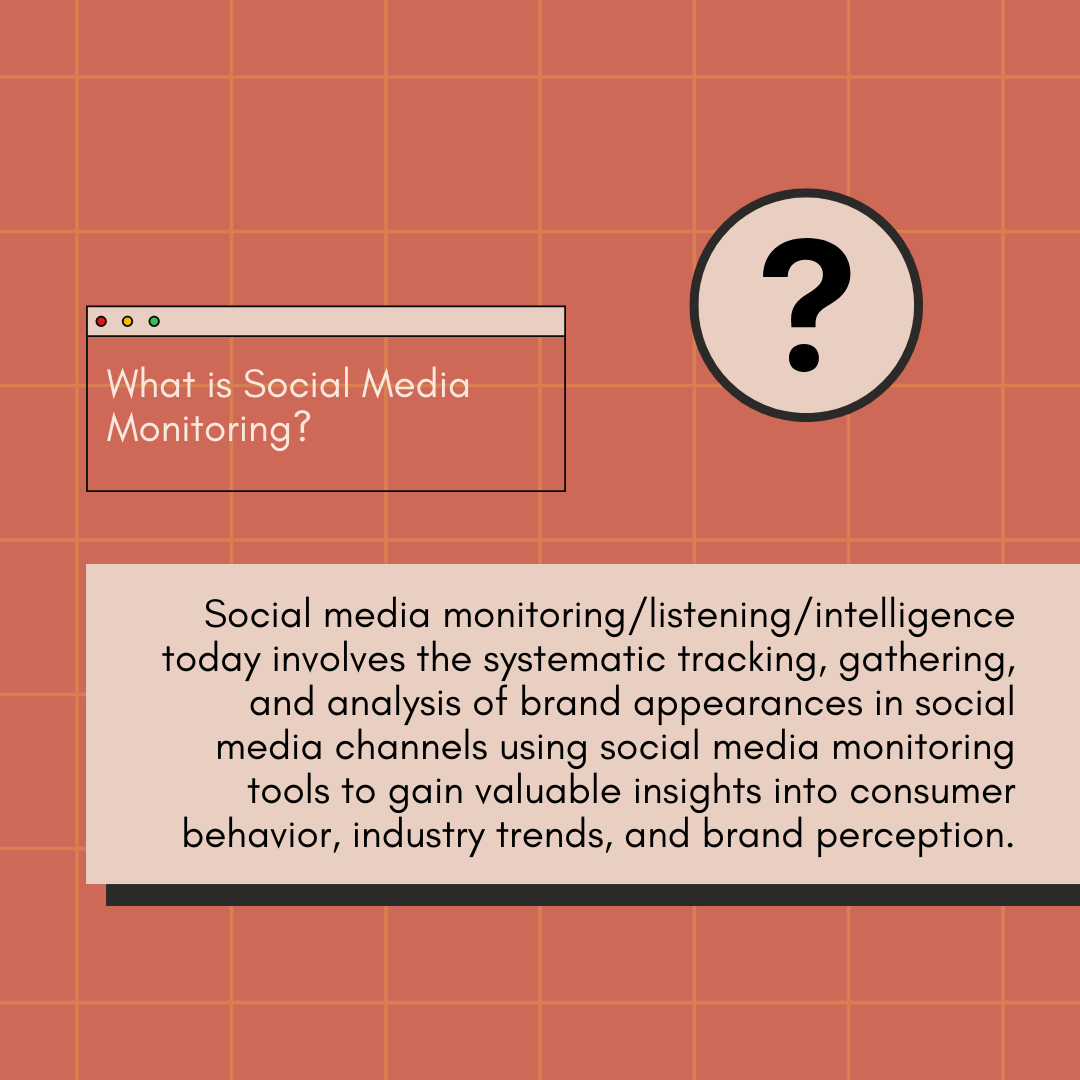
Social media monitoring/listening/intelligence today involves the systematic tracking, gathering, and analysis of brand appearances in social media channels using social media monitoring tools to gain valuable insights into consumer behavior, industry trends, and brand perception. Monitoring goes way beyond merely counting likes or shares; and spreads to extracting actionable data from the vast flow of never-ending social interactions.
2. Ways in which Social Media Monitoring Tools Drive Your Business Forward
a. Analyzing Customer Sentiments
One of the most potent applications of social media monitoring tools is gauging customer sentiment precisely. By analyzing mentions and comments related to a brand, its products, or the entire industry, businesses can understand their prospects as well as how customers perceive them. This valuable information can transform marketing strategies and help in crafting a more customer-centric approach.
b. Analyzing the competition
Adroit social media monitoring provides consequential insight into the activities of competitors. By tracking their online presence, engagement, and customer feedback, businesses can identify gaps in the market, refine their own strategies, and stay a step ahead in the competitive landscape.
c. Crisis Management
The real-time nature of social media makes it a potential breeding ground for crises. Social media monitoring allows businesses to detect and address issues swiftly. By identifying negative sentiment early on, companies can mitigate damage, protect their brand reputation, and even turn a crisis into an opportunity for positive engagement.
d. Influencer Collaboration
Identifying influencers relevant to your industry is crucial for effective marketing. Social media monitoring helps in identifying influencers who align with your brand values and have an engaged audience. Collaborating with these influencers can amplify your reach and enhance brand credibility.
e. Product Feedback and Innovation
Monitoring social media channels for discussions about your products or services provides a direct line to customer feedback. This can be invaluable for product improvement and innovation. By actively listening to your audience, you can identify pain points, address issues, and stay attuned to market demands.
3. How Does Social Media Monitoring Work?
Social media monitoring involves a multi-step process that combines advanced technology with human analysis.
a. Data Collection
The first step is to collect data from various social media channels. This includes mentions, comments, likes, shares, and other relevant interactions. Advanced monitoring tools use web scraping, APIs, and other techniques to gather this data in real-time.
b. Data Processing and Analysis
Once the data is collected, it needs to be processed and analyzed. Natural Language Processing (NLP) and machine learning algorithms are employed to understand the context, sentiment, and themes of the social media content. This analysis provides actionable insights into consumer behavior and market trends.
c. Reporting and Visualization
The insights derived from social media monitoring are typically presented through intuitive dashboards and reports. Visualization tools help businesses make sense of the data, allowing for informed decision-making. Trends, patterns, and anomalies are highlighted, enabling a deeper understanding of the market landscape.
4. Why is Social Media Monitoring So Important?
The importance of social media monitoring cannot be overstated in the digital age. Here are some compelling reasons why businesses should prioritize it:
a. Real-time Insights
Social media monitoring provides real-time insights into consumer behavior and industry trends. This agility allows businesses to adapt quickly to changing market dynamics and consumer preferences.
b. Reputation Management
The public perception of a brand can be shaped by social media. Monitoring social channels helps in identifying and addressing issues promptly, preserving and enhancing brand reputation.
c. Strategic Decision-Making
Informed decisions are the cornerstone of successful business strategies. Social media monitoring equips businesses with the data needed to make strategic decisions, allocate resources effectively, and optimize marketing efforts.
d. Customer Engagement
Engaging with customers on social media is a powerful way to build relationships. Social media monitoring enables businesses to identify opportunities for engagement, respond to customer queries, and foster a sense of community around the brand.
5. Choosing the Proper Social Media Monitoring Tools
Selecting the right social media monitoring tool is crucial for maximizing the benefits of this practice. Among the myriad options available, Vee Track stands out for its comprehensive features and user-friendly interface.
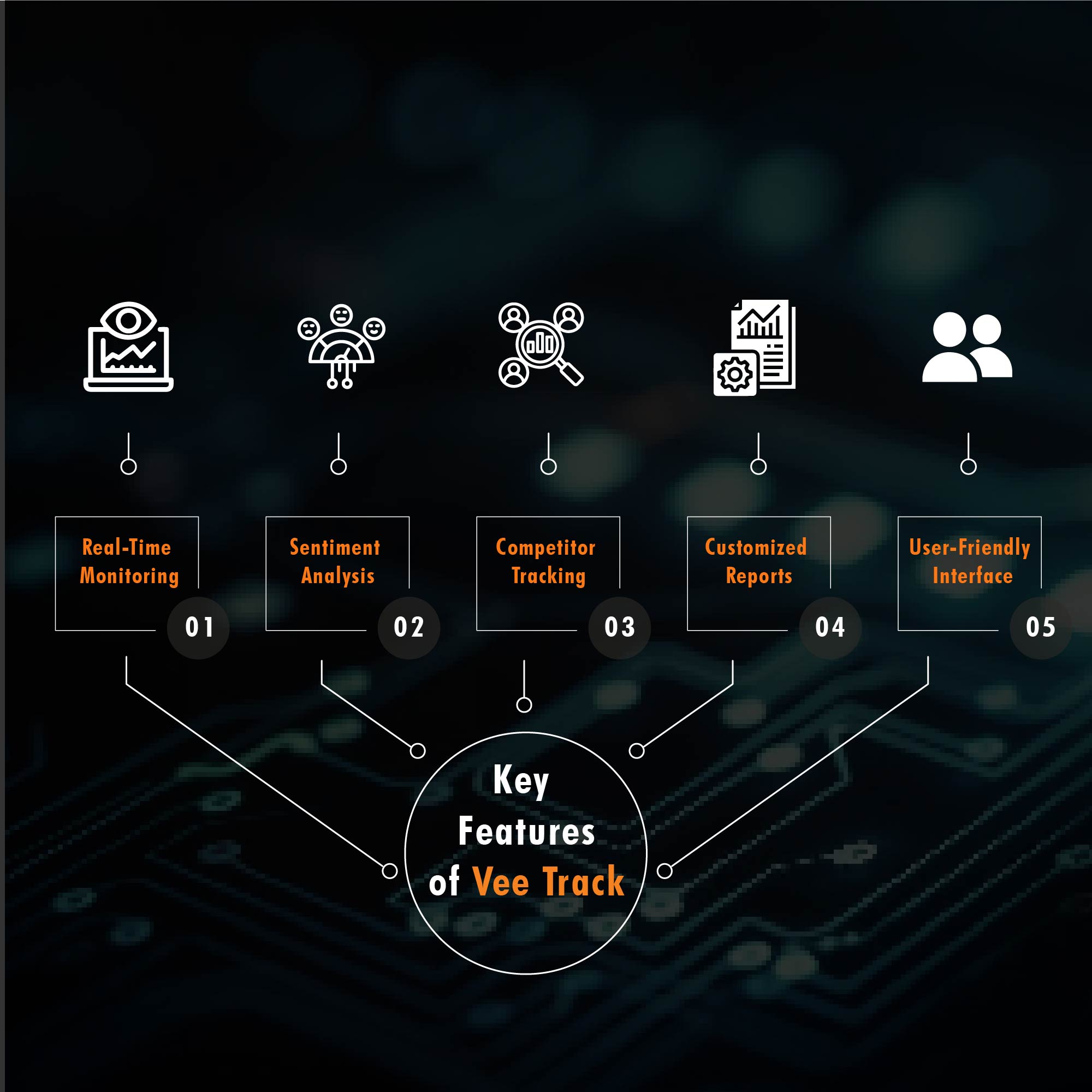
a. Key Features of Vee Track
- Real-Time Monitoring: Vee Track provides real-time monitoring of social media channels, ensuring that businesses stay updated on the latest conversations relevant to their brand.
- Sentiment Analysis: The tool employs advanced sentiment analysis to categorize social media mentions as positive, negative, or neutral, providing a nuanced understanding of brand perception.
- Competitor Tracking: Vee Track allows businesses to track and analyze the online activities of competitors, facilitating strategic decision-making.
- Customized Reports: The tool offers customizable reports and dashboards, allowing businesses to focus on the metrics that matter most to them.
- User-Friendly Interface: Vee Track's intuitive interface makes it accessible to users with varying levels of technical expertise.
b. How Vee Track Stands Out
Vee Track's commitment to delivering actionable insights and facilitating informed decision-making sets it apart in the realm of social media monitoring tools. Its robust features, coupled with a user-friendly design, make it a valuable asset for businesses looking to harness the power of social media.
6. The Benefits of Social Monitoring
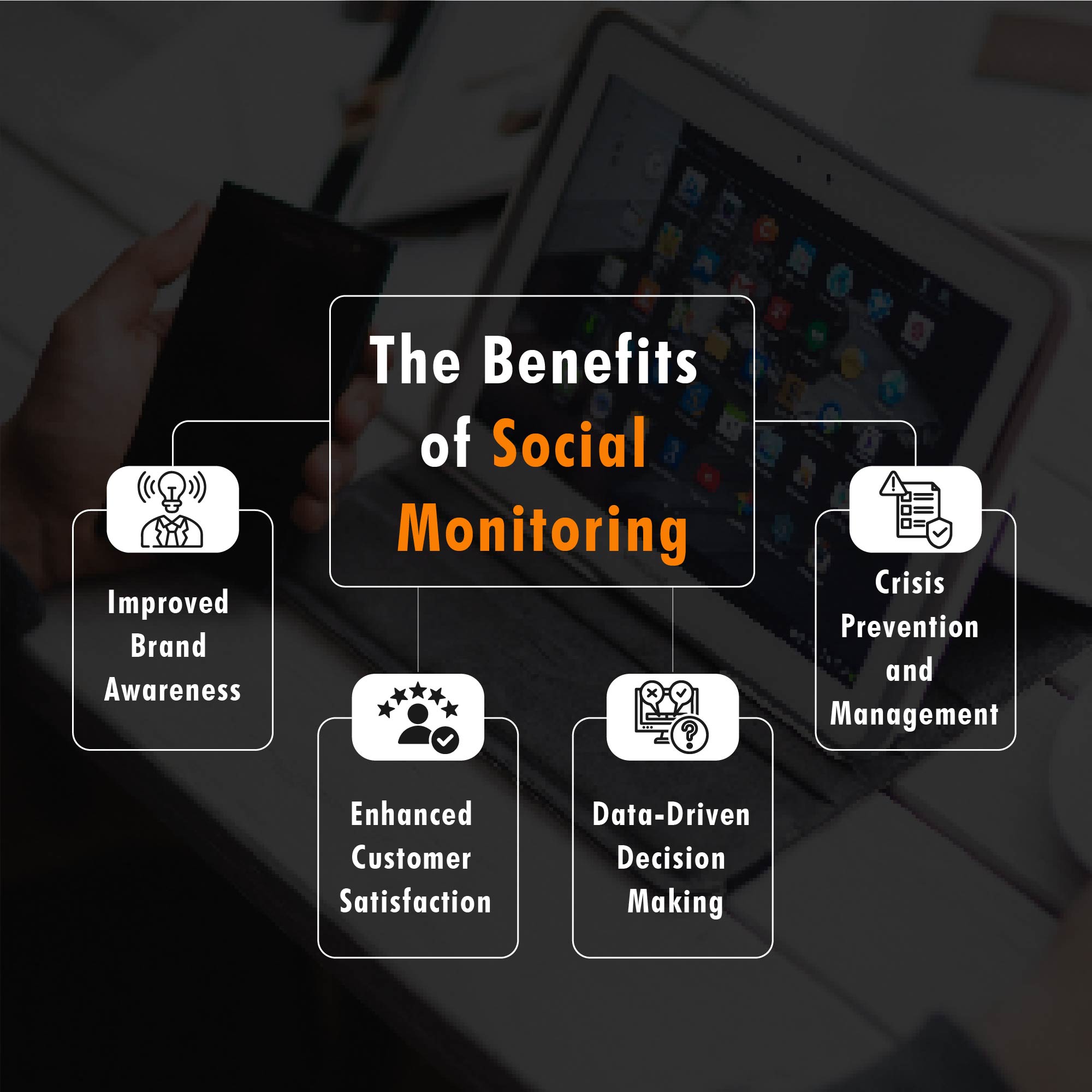
a. Improved Brand Awareness
Social media monitoring helps businesses stay attuned to online conversations about their brand. By actively participating in these conversations, companies can boost brand awareness and establish a stronger online presence.
b. Enhanced Customer Satisfaction
Addressing customer concerns and feedback in real-time contributes to higher customer satisfaction. Social media monitoring allows businesses to respond promptly, showing customers that their opinions are valued.
c. Data-Driven Decision Making
The insights derived from social media monitoring empower businesses to make data-driven decisions. Whether it's refining marketing strategies or optimizing product offerings, data-driven decision-making leads to more effective outcomes.
d. Crisis Prevention and Management
Early detection of potential issues through social media monitoring enables businesses to take proactive measures, preventing crises before they escalate. In cases where a crisis does occur, quick and informed responses can help in managing and mitigating its impact.
7. How to Use Social Media Monitoring
Implementing social media monitoring effectively involves a strategic approach. Here are steps to leverage this powerful tool:
a. Set Clear Objectives
Define your goals and objectives for social media monitoring. Whether it's brand reputation management, competitor analysis, or customer engagement, having a clear roadmap will guide your monitoring efforts.
b. Choose Relevant Metrics
Identify the key metrics that align with your objectives. These could include sentiment analysis, engagement rates, reach, and conversion rates. Focusing on relevant metrics ensures that you track the aspects that matter most to your business.
c. Select Appropriate Keywords
The effectiveness of social media monitoring hinges on the choice of keywords. Select keywords that are specific to your brand, industry, and products. This ensures that you capture relevant conversations and filter out noise.
d. Regularly Review and Adjust
The social media landscape is dynamic, and monitoring strategies need to evolve accordingly. Regularly review the performance of your monitoring efforts and adjust your approach based on changing trends and business priorities.
8. Social Media Monitoring Tips
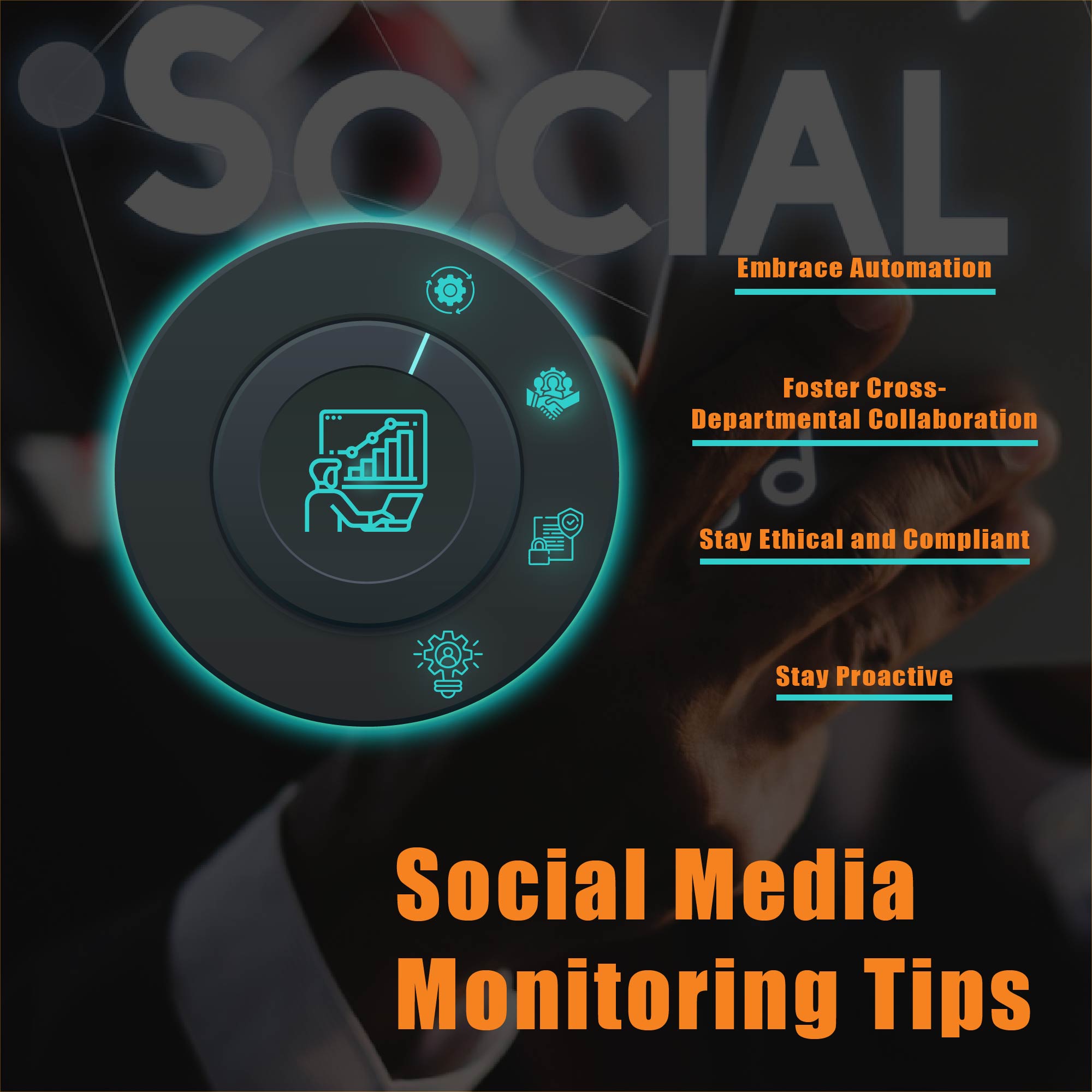
a. Embrace Automation
While human analysis is crucial, automation tools can significantly streamline the data collection and processing phases of social media monitoring. Leverage automation to enhance efficiency and accuracy.
b. Foster Cross-Departmental Collaboration
Social media monitoring is not limited to the marketing department. Encourage collaboration between departments such as customer service, product development, and sales to extract maximum value from the insights gathered.
c. Stay Ethical and Compliant
Respect user privacy and adhere to ethical practices when monitoring social media. Ensure compliance with data protection regulations and respect the boundaries of online conversations.
d. Stay Proactive
Anticipate trends and potential issues by staying proactive in your social media monitoring efforts. Being one step ahead allows your business to respond swiftly to emerging opportunities or challenges.
9. How to Set Up Social Media Monitoring
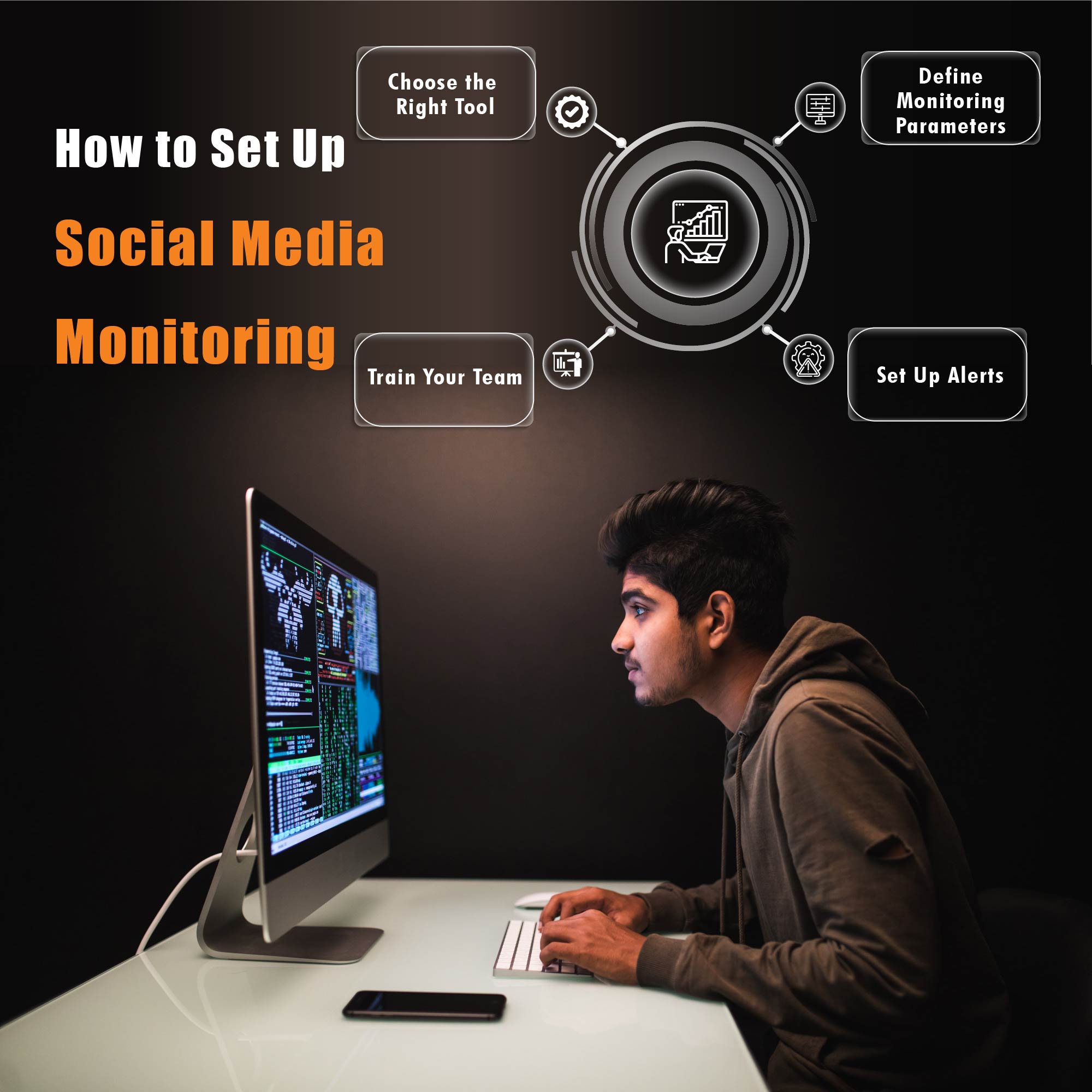
a. Choose the Right Tool
Select a social media monitoring tool that aligns with your business goals and technical requirements. Evaluate the features, user interface, and customer support of potential tools to make an informed decision.
b. Define Monitoring Parameters
Clearly define the parameters you want to monitor, including keywords, social media channels, and competitors. This ensures that your monitoring efforts are focused and yield relevant insights.
c. Train Your Team
If you have a team responsible for social media monitoring, provide training to ensure they understand the tool's features and functionalities. This empowers them to extract meaningful insights from the data.
d. Set Up Alerts
Configure alerts for key metrics or mentions that require immediate attention. This ensures that your team is notified promptly in case of significant developments or issues.
Conclusion
In conclusion, social media monitoring is an indispensable tool for businesses looking to navigate the complex landscape of digital marketing successfully. From understanding customer sentiment to making data-driven decisions, the benefits of social media monitoring are diverse and impactful. By choosing the right tools, implementing effective strategies, and staying proactive, businesses can unlock the full potential of social media monitoring and drive their success forward in the competitive digital arena. Vee Track, with its advanced features and user-friendly interface, stands out as a valuable ally in this journey, enabling businesses to monitor, analyze, and capitalize on the vast world of social media.
